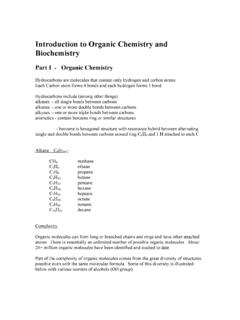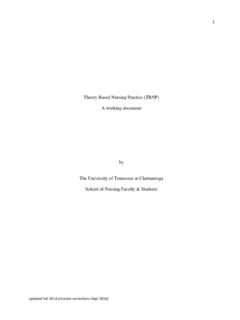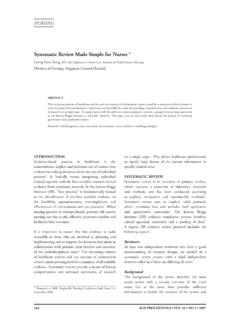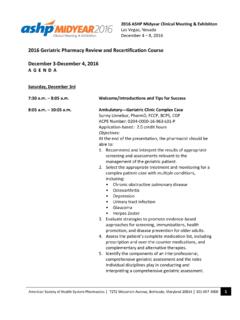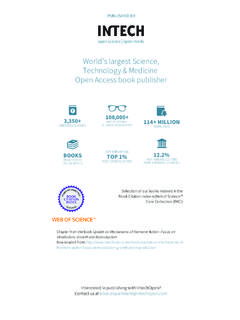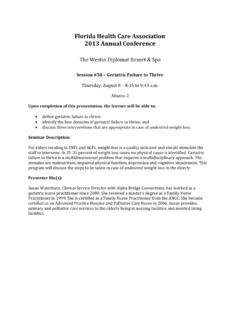Transcription of Geriatric Newsletter Fa16 Edition - The University of ...
1 Falls Prevention Health Fair a Great Success On September 27th, the North River Civic Center hosted a community Falls Prevention Awareness Day event with the theme Ready, Steady, Balance. The event helped raised awareness that many falls among older adults can be prevented with regular physical activity, a fall risk assessment by a healthcare provider, a safe and supportive home environment, and a yearly medication review, eye exam, and hearing assessment. Activities at the health fair included health screenings, educational sessions, medication review and take back, home safety stations, and a welcome ceremony complete with chair exercising. The event was sponsored by the Chattanooga-Hamilton County Health Department, University of Tennessee at Chattanooga, City of Chattanooga Youth and Family Development, Erlanger Trauma Services, and BlueCare Tennessee, in partnership with additional community agencies and networks.
2 Over 100 students from UTC s departments of Nursing, Physical Therapy, Occupational Therapy, Psychology, Nutrition, Social Work, and Athletic Training were present. "UTC has a vested interest in a healthy Chattanooga. Through partnerships with many community agencies including the Chattanooga-Hamilton County Health Department, we are able to offer health fairs such as this event. During the assembly, attendees received information about specific health care concerns. UTC students had the opportunity to practice their skills in an authentic setting. This experiential learning allows students to develop said skills through practice and reflection," reported Britt Cusack, Endowed Chair of Gerontology at UTC. In Hamilton County, Tennessee, there were 736 fall-related hospitalizations among older adults in 2012, resulting in almost $27 million in hospital charges.
3 In that same year, 19 older adults died as a result of a fall, said Carleena Angwin, public health educator with the Chattanooga-Hamilton County Health Department. For further details, visit Winter 2015 Issue 1, Volume 1 Elderhood Express University of Tennessee at Chattanooga Fall 2016 Edition Elderhood Express was developed to disseminate evidence-based information to community agencies in the Chattanooga area who are intimately involved with the care of our population who are outgrowing their youth. Many newsletters and publications focus on childhood and adulthood, but it is rare to find one solely aimed at issues experienced in elderhood. Article selections will be chosen from a variety of disciplines. We will also provide listings of Geriatric -focused community events as available.
4 The reBARK able Effect That Animals Have on Geriatric Persons Health Alex Snyder, RN, BSN, MSN Student Nearly two-thirds of all US citizens and half of elderly individuals own a pet (Herzog, 2011). The integration of these four-legged friends into our households provides us with companionship, happiness, and sometimes unpredictability. However, do we actually understand the physiological and psychological benefits that our pets provide? The Census Bureau estimates that by the year 2050, million people living in America will be over the age of 65. That s nearly double the estimated population of million senior Americans that were living in 2012 (Ortman, Velkoff, & Hogan, 2014). As people age, the risk of developing physiological and psychological disease processes increases.
5 Another issue that America is facing is the overpopulation of animal shelters. The American Society for the Prevention of Cruelty to Animals (ASPCA) reports that million companion animals enter animal shelters each year, and million of these animals are euthanized (2016). This article will examine research that has been conducted over the physiological and psychological benefits that domestic animals can have on the Geriatric population s overall health in hopes of proposing a solution to two ongoing issues in America s society. The Centers for Disease Control and Prevention lists cardiovascular disease as the leading cause of death among Americans (2016). This disease process is one in which compliance with a treatment regimen is essential for appropriate management. First-line pharmacologic management of heart failure often times includes an angiotensin-converting-enzyme (ACE) inhibitor or beta-blocker.
6 The goal of both of these medications is to reduce the blood pressure and heart rate in order to ease the workload of the heart. In the article Cardiovascular Reactivity and the Presence of Pets, Friends, and Spouses: The Truth About Cats and Dogs, the authors conducted a study to determine the reactivity of heart rate and blood pressure to that of physiologic stressors. The results of this study concluded that pet owners exhibited significantly lower resting heart rates, systolic blood pressure, and diastolic blood pressure than non-pet owners (Allen, Blascovich, & Mendes, 2002). A non-pharmacologic management to cardiovascular disease is improving one s lifestyle through appropriate amounts of exercise. In the article Does Getting a Dog Increase Recreational Walking?, Cutt, Giles-Corti, and Burke concluded that dog owners were more likely to achieve recommended levels of physical exercise through walking.
7 The duration of walking times also increased for this population segment from anywhere between 22 to 31 minutes per week after acquiring a Pet owners exhibited significantly lower resting heart rates, systolic blood pressure, and diastolic blood pressure than non-pet owners. dog (2008). These articles present evidence that through the ownership of pets, agonistic effects of cardiovascular pharmacology and improved lifestyle modification can be achieved. Cardiovascular disease is a physiological disease process that can be devastating to the elderly, but psychological illness is also a pertinent health issue among this population. Depression is one of the most common mental illnesses, of which aging is a risk factor. The Geriatric population frequently encounters many life stressors, such as loss of a spouse, retirement, decreased income, and chronic health conditions that may also predispose them to depression.
8 Animals are a great resource to provide the companionship and interaction that many aging individuals seek and enjoy. El-Alayi et al. wrote an article concerning the emotional well-being of individuals and pet ownership. The authors of this article noted strong evidence to the effect that companion animals are associated with increased self-esteem, life satisfaction, positive moods and lower levels of loneliness (2006). Decreasing the risk and incidence of depression through pet ownership will in turn promote increased energy and self-esteem allowing older individuals to participate in the adequate physical health maintenance to prevent other physiological disease processes from occurring The ownership of a pet does not occur without the potential for minor negative impacts among the elderly.
9 Increased responsibility, certain financial requirements, and increased risk of falls are a few examples that could ensue. However, the aforementioned positive outcomes of pet ownership on elderly individuals health far outweigh the risks of the negative consequences. The opportunity of a mutually beneficial relationship between pet and owner also exists due to the plethora of animals in need of a permanent home. Ultimately, the ownership of a pet is proven to improve the physiologic and psychologic health aspects in the Geriatric community. Frailing or Failing? Defining Frailty Syndrome vs Adult failure to thrive for Clinical Practice Britt Cusack, DNP, ANP-C, APN & Christian Harbin, BSN Student Physical decline and aging often go hand-in-hand they are frequently synonymous.
10 As one ages, the body naturally undergoes a slow process of deterioration, and sometimes this process results in what is known as frailty syndrome. When most people hear this term they think of general fragility. While this is true to an extent, it has been suggested that at least three of the following elements must be present in order to deem an individual as frail: unexplained weight loss, self-reported exhaustion, weak grip strength, slow walking speed, and low activity. 1 Based on this definition, experts on aging agree that frailty is a very important, yet complex, medical condition and one that has many causative factors and ultimately increases the vulnerability of a person for greater dependency and/or death. 2 Furthermore, Phillips-Burkhart (2016) reveals that frailty is commonly found among those individuals who are older than 70 years of age, while its prevalence drastically increases among those who are older than 80 years of References Allen, K.


